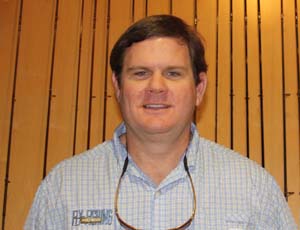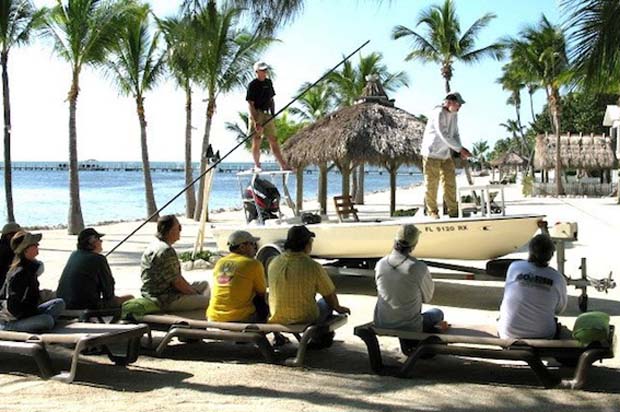David Olson is a Federation of Fly Fishers Master Certified Casting Instructor with wins and placements in casting tournaments. He provides sage advice on how to go about improving your casting

David Olson is a Federation of Fly Fishers Master Certified Casting Instructor with wins and placements in casting tournaments. He is also the managing partner of the Fly Shop of Miami.
[dropcap]W[/dropcap]hile a proficient bow hunter may shoot only a single arrow, he’s learned how to make it count. After mastering his craft through hours of practice, he’s assured himself of a predictable harvest. That’s a lesson that applies to fly casting.
Sometimes, like when you’re sight fishing, you only get one cast before your quarry either spooks, moves out of range, or swims to a place where you’re unable to reach it. That’s why here, as in hunting, every shot needs to count. The ability to make that happen sets great anglers apart. So while nothing may be a substitute for actual experience, you can increase your success rate through diligent practice.
Once you’ve developed a rudimentary casting stroke, it’s time to move on to more-practical applications. One way to do this is to set out targets (a coiled garden hose works fine for this) at realistic distances (say, 20 to no more than 70 feet), and try to hit them from the ready position (in other words, gripping your fly between your thumb and forefinger).

Based in Islamorada, Florida Sandy Moret’s Florida Keys Fly Fishing School has been offering world class saltwater fly fishing instruction for over 25 years. Students learn every aspect of saltwater fly fishing in two + days of classroom course work, one-on-one casting sessions and social time with the team of super-pro instructors, plus two optional fishing days.
In the beginning, I suggest you use a hook-less fly. As your skills improve, select smaller targets. Meanwhile, here are the basics regarding the “ready position: ”You need sufficient fly line extended beyond your rod tip, so that if you make back cast it forms a loop. As the loop starts climbing, it pulls at the fly, which you then release and let follow the loop. When your back cast turns over, if you’ve formed a proper loop, you can follow-up with a forward cast. Make additional back casts, if you need more distance. Practice this move until it becomes second nature.
If you enlist a partner, he can add to the realism by asking him to pick random targets – ones you’ve placed in different positions that correspond to the hands of a clock. He’ll say; “two o’ clock; 50 feet.” Focus on hitting whichever one he or she tells you, while minimizing the number of false casts: making two or three at the most.
Limit your practice to thirty minutes; longer and mental (as well as physical) fatigue sets in. A drill worth trying, that takes only a few minutes, is make ten casts in a row at a particular target, while limiting each one to a single back cast. Another involves casting underneath a car, or other objects that simulate mangroves or a dock.
The point here is to focus, and work on your weak points; be they distance, accuracy, or speed of delivery. By focusing your efforts, you’ll improve exponentially – at least, faster than by plodding in the typical rut.
To get a sense of proper casting techniques, the Florida Keys fishery and the Florida Keys Outfitters Fly Fishing School take a listen to Sandy Moret. Sandy is an eight-times repeat winner of the Florida Keys’ most prestigious fly fishing tournaments: The Gold Cup Tarpon Tournament and the Islamorada Invitational Bonefish Fly Championship. His fly fishing school has been going strong for over a quarter of a century and is hands down the best there is.
[information]
Fly Shop of Miami
8243 S Dixie Hwy, Miami, FL 33143
(305) 669-5851
Website . . .
Florida Keys Outfitters
81219 Overseas Hwy, Islamorada, FL 33036
(305) 664-5423
Website . . .
[/information]
[youtube id=”CXCctbxN2V0″ width=”620″ height=”360″]






